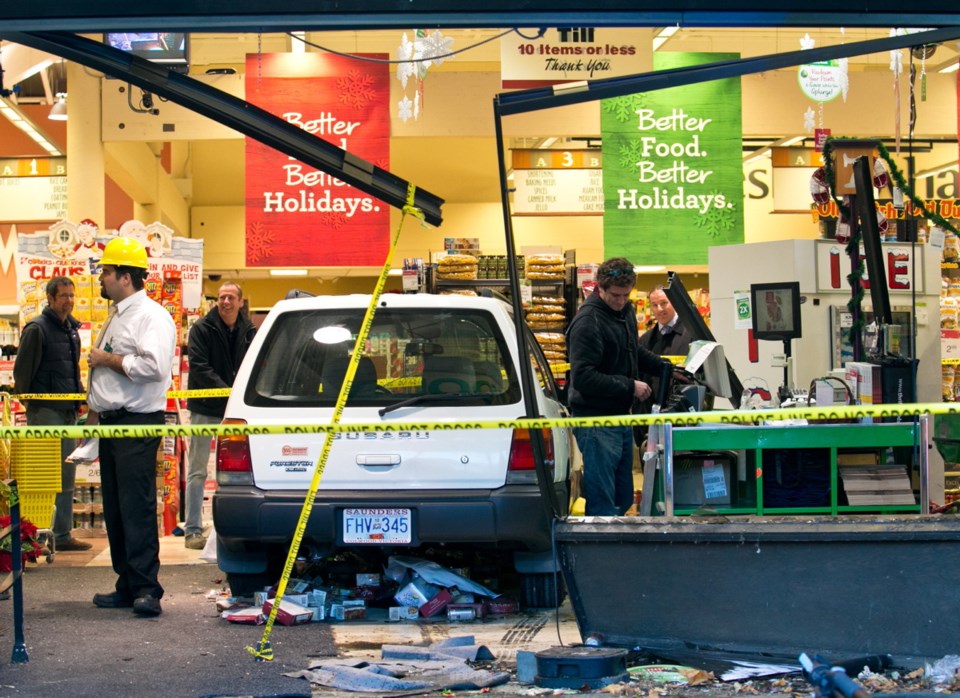Whenever a senior is involved in a high-profile accident — such as the early-December incident in which a woman drove her vehicle into a Saanich grocery store — the debate over increased regulations and mandatory testing for older drivers resurfaces.
Although it is ultimately up to the Office of the Superintendent of Motor Vehicles to rescind a driver’s licence, the majority of older drivers are already self-regulating their driving, according to results of a study on aging conducted in part by researchers at the University of Victoria.
Researcher Holly Tuokko and her students took part in the Canadian Driving Research Initiative for Vehicular Safety in the Elderly, also known as Candrive.
Victoria was one of seven Canadian cities involved in the study, which tracked 928 participants aged 70 to 94 over five years.
Research found 40 per cent of drivers older than 70 restricted their driving depending on road conditions. A majority stayed off the road when faced with bad weather, nighttime driving and heavy traffic.
The research is borne out by statistics from the Insurance Corporation of British Columbia. Of the more than 3.2 million active drivers in B.C., more than 500,000 are 65 and older. The rate of crashes involving senior drivers is among the lowest of all age groups.
While seniors drive less, they are more at risk when they do. Comparing crashes per kilometre driven, the crash rate for seniors 75 and older is similar to the crash rate of new drivers (ages 16 to 24).
The research showed almost half of senior drivers self-regulated their driving, reducing their time behind the wheel as they became aware of slowing or failing faculties, such as impaired vision, strength or mobility.
Those who continued to drive usually restricted their driving to daylight hours, in good weather and along familiar routes.
An accident such as the recent one at the Thrifty Foods store in Saanich will likely trigger a driver to consider giving up his or her licence as research found seniors also were more likely to react to other people holding negative views of their driving.
That is welcome news for police agencies, who don’t have the resources to remain in contact with a driver after an accident.
“We have to rely on the community, especially family members, to inform us if they see diminished capacity in a senior driver,” said Sgt. Steve Eassie of Saanich police.
“We can then make a recommendation to the Office of the Superintendent of Motor Vehicles to take away a person’s driver’s licence.”
While high-profile incidents capture the public’s attention, seniors typically aren’t a menace to other drivers.
“When we see incidents involving seniors, they are typically not on roadways,” Eassie said.
“While we see a higher prevalence of incidents like we saw [this month], senior drivers aren’t as likely to come to our attention as often because they don’t drive aggressively or engage in distracted driving — like talking on cellphones.”



